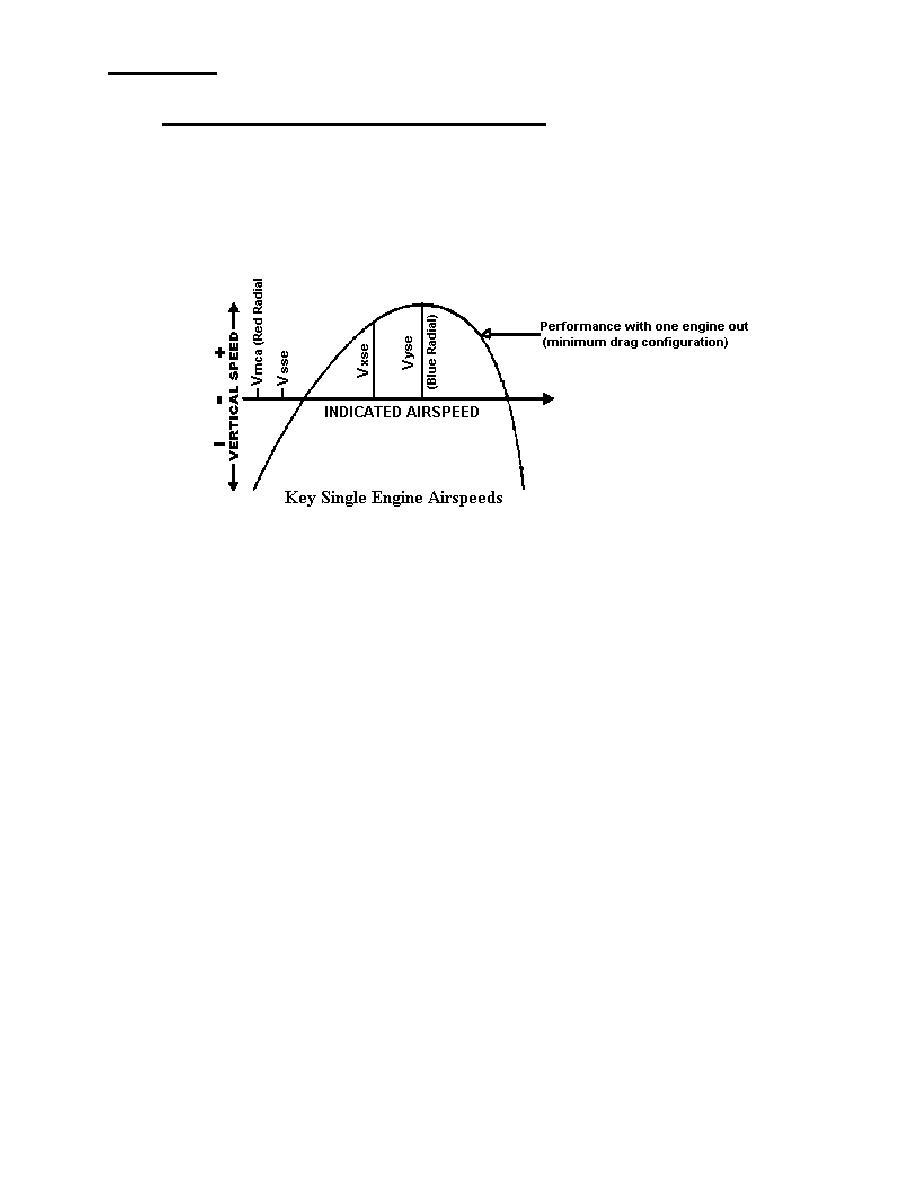 |
|||
|
|
|||
|
|
|||
| ||||||||||
|
|  APPENDIX F
KEY AIRSPEEDS FOR SINGLE-ENGINE OPERATIONS
Airspeed is the key to safe single-engine operations. For most light twins there is an:
Airspeed below which directional control cannot be maintained.
Vmca
Airspeed below which an intentional engine cut should never be made.
Vsse
Vyse
Airspeed giving the best single-engine rate of climb (or the slowest loss of altitude).
Airspeed giving the steepest angle-of-climb with one engine out.
Vxse
Figure E-6
MINIMUM CONTROL SPEED AIRBORNE (Vmca)
Vmca is designated by the red radial on the airspeed indicator and indicates the minimum control speed,
airborne at sea level. Vmca is determined by the manufacturer as the minimum airspeed at which it is
possible to recover directional control of the airplane within 20 heading change and thereafter maintain
straight flight with not more than 5 of bank, if one engine fails suddenly with:
Takeoff power on both engines,
REARMOST ALLOWABLE CG,
Flaps in takeoff position,
Landing gear retracted,
Propeller windmilling in takeoff pitch configuration (or feathered if automatically featherable).
However, sudden engine failures rarely occur with all of the factors listed above and therefore, the actual
Vmca under any particular situation may be a little slower than the red radial on the airspeed indicator.
However, most airplanes will not maintain level flight at speeds at or near Vmca. Consequently, it is not
advisable to fly at speeds approaching Vmca except in training situations or during flight tests.
INTENTIONAL ONE-ENGINE INOPERATIVE SPEED (Vsse)
Vsse is specified by the airplane manufacturer in the new handbooks and is the minimum speed at which to
perform intentional engine cuts. Use of Vsse is intended to reduce the accident potential from loss of control
after engine cuts at or near minimum control speed. Vsse demonstrations are necessary in training, but
should only be made at a safe altitude above the terrain and with the power reduction on one engine made
at or above Vsse. Power on the operating (good) engine should then be set at the position for maximum
continuous operation. Airspeed is reduced slowly (1 knot per second) until directional control can no
longer be maintained or the first indication of a stall obtained. (See Figure E-7.)
F-4
|
|
Privacy Statement - Press Release - Copyright Information. - Contact Us |